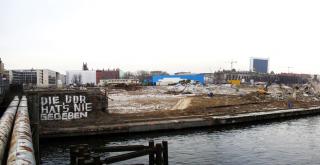
Subject area
Heritage Constructions and Canon Formations in Art, Literature and Architecture
Cultural heritage is not a constant essential property, but rather a social construction subject to continuous change. The question of what should qualify as cultural heritage has been negotiated anew again and again throughout history, and has often sparked altercations in academia and society. Even today, cultural heritage — especially in the context of post-colonial discussions and claims — remains a highly topical and contested subject.
Definitions of heritage go hand in hand with processes of cultural canon building, which are often determined not by opinions drawn from a broad societal base, but frequently also through authoritarian orders that can remain operative over centuries. This subject area focuses on heritage constructions and canon formations in art, literature, music and architecture. It pays particular attention to the underlying processes of negotiation, in which academia, society and politics all play a part.
Research topics
BELLUM ET ARTES. Cooperation and exhibition projec
Together with twelve partners from seven countries, the research and exhibition project examines and presents the effects of the Thirty Years' War on the arts, artists and their patrons in Central Europe.
Canon Constructions
Canons of literature and art created in 19th- and 20th-century Eastern Europe fulfill a complementary double function of aesthetical-cultural representation and community-anchored identification. What mechanisms determine the construction of canons, and how can we describe this canon’s initial and continuing effects?
Heritage without Inheritors
The eastern half of Europe is a clearer example than almost any other part of the world that cultural goods that are at first pushed aside as the relics of an unwelcome past can with time be adopted as heritage. The case studies examine these processes, drawing a line from the 19th century to the present.
Re-thinking Socialist Architectural Legacy

The Soviet Union’s most ambitious urban and social experiments included the construction of new »socialist cities«. When state socialism came to an end, this legacy underwent profound transformations. This study throws its spotlight on its changing perception in the context of local identities and the national narrative.
The invention of Tradition: Kyiv Metropolia (1596-1720)

At the end of the 16th and throughout the 17th century, a process of »invention« of the Kyiv historiographical, hagiographic and polemical tradition took place which was regarded as the return to the »ancient times« and the original sources.
The Lost City of Ani
The capital of the mediaeval Armenian Kingdom, Ani, has symbolised Armenian statehood over the centuries. A quintessentially »lost« city in the Armenian imagination and beyond, Ani has evolved from a real into an imagined place. The research project addresses the complexity of configurations generated by the »lost city« of Ani by exploring them from multiple perspectives and in an interdisciplinary manner:
